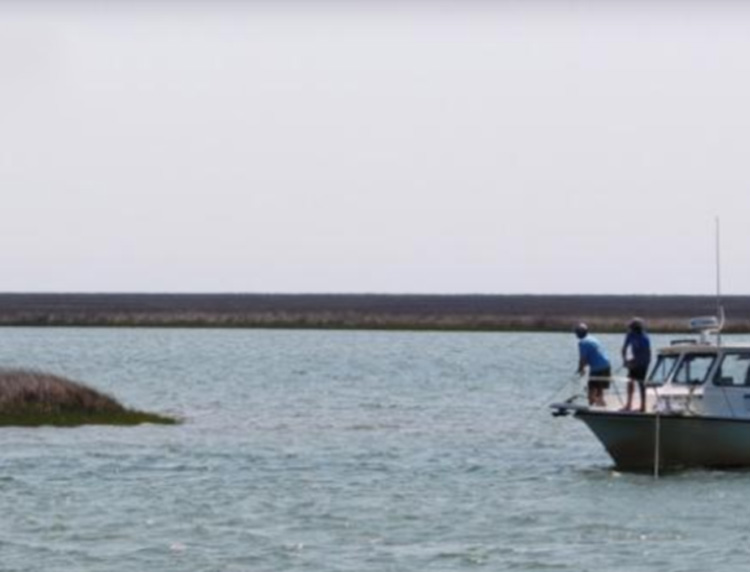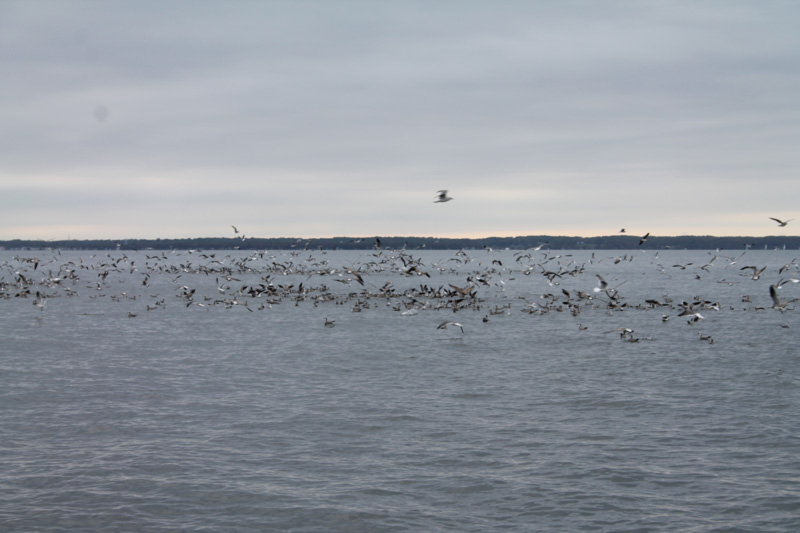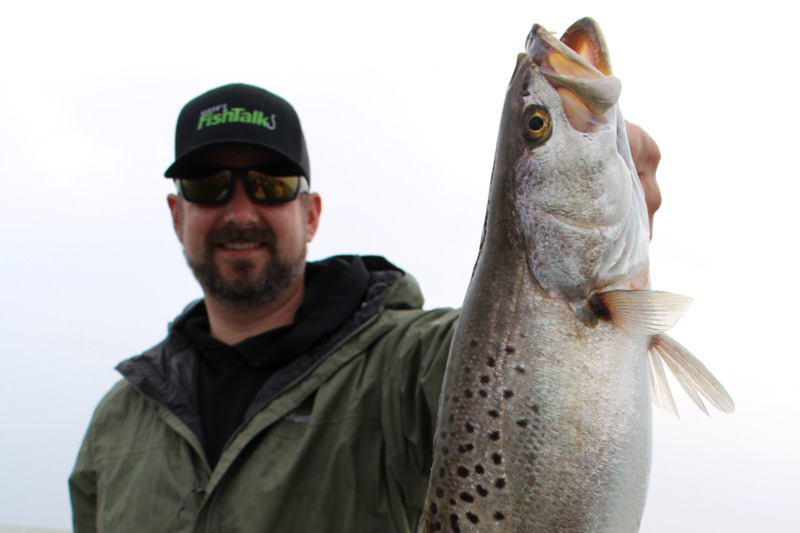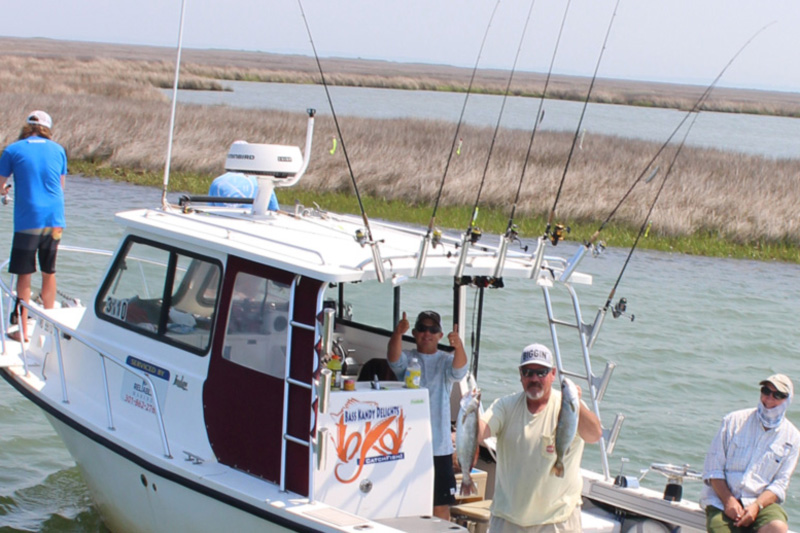If you want to boost your success while Chesapeake Bay fishing, learning how to handle your fishing boat like a pro is huge. A crucial fact I can say I’ve learned a bunch about in the last 21 years and over 4000 days on the water guiding anglers, boat positioning is the difference between a bad day and a decent one, or a decent day and an epic one. When I’m out their guiding anglers I don’t consciously dwell on it too much, because over time it just becomes natural. As I sit here thinking about it, however, it does require plenty of knowledge in different fishing situations.

Major considerations taken when fishing anywhere are wind direction and current, where the fish are, what direction they’re moving, and what they’re eating. Certainly, the presence of other boats can also dictate exactly where and how you will position your boat.
Equipment I use for boat positioning is primarily my Minn Kota Riptide Ulterra. This 36-volt trolling motor is incredible for positioning on structure anywhere fish are present and it’s been a total game-changer for me. With the Spot-Lock system onboard, I basically hit a button and hold the boat exactly where I want. I don’t use the trolling motor around bird activity, however, because under birds, the bait and fish are on the move. In this case I drift by setting my boat in a position where I believe the wind and current will push my boat near where I think the fish will be located. Positioning the boat to drift into what I call the “epicenter of activity” is what I always strive to do. To me, this is the area in the water where I believe the fish are actively feeding. Near birds, that position is usually below where the most birds are concentrated.
Near structure, however, the epicenter of activity is the area where the structure is being affected the most by current. As always with fishing, there are no hard rules regarding exactly where the best fish will be. But I always start with the epicenter of activity and go from there.
The other piece of gear I use extensively is my Humminbird Solix Side and Down Imaging, to nail down exact locations of fish before deciding exactly how and where to position the boat. Current technology is a huge advantage — so why not use it to help make your day great?
Boat Positioning Around Diving Birds
A situation we all face as anglers on the Chesapeake Bay at different times of the year is fishing around actively working gulls and/or gannets. Feeding birds are eating the same bait the fish are eating. Where I see the most active birds I envision the most active fish are right there also, but when judging where to place my boat some questions come to mind: What’s the wind direction? What’s the current direction? What are the fish eating, and where in the water column are they? These questions revolve around one make-or-break question: Exactly how is my boat going to drift?

Preferably no boats are around, and I can position the boat in a position to cast to and directly around the epicenter of activity. Typically, predator fish push bait fish into and against the current, allowing them to keep the bait corralled and making for easy pickings. Placing my boat up-current from the active fish allows me the longest drift while in the strike zone.
However, other factors like wind then come into play. Determining how your boat will drift with these dynamics is crucial to being effective. After your first drift you need to check your GPS track, and determine your exact drift direction.
The more you work around birds with your boat the better you’ll get with boat position. A couple of things not to do around birds is to rush on plane or at a high speed into the bird activity. Doing this certainly interrupts feeding and will possibly spook the best fish in the area.
I rarely if ever will attempt to work birds with several boats actively fishing a flock. I hate crowds! If fish are feeding on top and birds are working here, then other working fish and birds should be in the region. It’s called a pattern, but that’s another topic for another day. In any case, to locate other pods or working birds and fish I look at the depth, tide movement, and bottom composition, knowing that the same activity should be happening in other similar areas. Get the binoculars up and look around, or run your boat and find your own school.
Sometimes, so many boats are around that you’ll be forced to fish near others. When fishing in an area with other boats present ALWAYS move slowly. There’s no need to race to or around the fish — it only upsets the fish and the fisherman around you. One trick I use: If I’m on the way to some active birds and other boats are racing to them, I like to stay back and allow the other boats to get right on the fish. Once they are stopped and casting, I will ease my way up-current of the active fish and let the fish come to me. By the time the fish come to me the other boats have been pushed away by wind and current. Most importantly, take your time and think it through, and once you get to know your boat and how it drifts you’ll know where to set up.
Boat Position While Fishing Structure
This is my favorite type of fishing — unlike bird activity, structure is always there and I can fish by myself. Current moving over and around structure makes for great ambush points for predator fish. And remember that structure has many different forms. In water over eight feet or so and as deep as 60 feet, on the Chesapeake Bay we’ve got ledges, rockpiles, wrecks, artificial reefs, old riprap, and bridges. In shallow water under eight feet, the structure I fish includes points, shallow ledges, grass beds, rockpiles, riprap, docks, bridges, and wrecks. One thing which makes all these structures similar is that they are best while current is pushing over and around them.

When fishing any structure, I like to place my boat in a position to effectively get my jig, plug, or paddle tail over and around the structure itself. However, deep structure and shallow structure are certainly different animals. Deep structure can be drifted or anchored over. But when positioning your boat for fishing shallow structure it’s best to stay at least 10 to 20 yards off.
Deep Structure
Deep structure (say, 20 feet or deeper) is easiest to fish. Using your fish finder and GPS you can positively identify the structure and get right over it. Vertical jigging metal or plastics will work great on edges, rockpiles, artificial reefs, or wrecks in this situation. On this type of structure, I use my Humminbird Solix Imaging to identify exactly where fish are located, or if they just aren’t there. Once located I use Spot-Lock to stay over the top of a structure in an exact position. Drifting will work, but if you hit bottom with your jig, snagging on heavy structure is much more common than when you’re Spot-Locked in position. The slower the drift, the better to detect bottom without getting snagged.
Certainly, anchoring is another way to locate your boat directly over structure. The problem with anchoring is that predicting the exact position you’ll end up in is complicated. Wind and current affect an anchored boat differently than one that’s drifting, so it makes positioning exactly over what you want something of a luck shot.
Shallow Structure
Last but not least, the most exciting — and my favorite — is fishing shallow structure. Important things to consider when fishing shallow structure are wind and current direction. Most great shallow structure areas have a visible current rip that can be seen on calm days.
With this technique I deploy my trolling motor about 50 yards from the intended target. After shutting down my main engine, I slowly and silently move within casting range, then engage the Spot-Lock on my trolling motor. When the bite slows or if I want to work a piece of nearby structure, I can unlock the boat’s position and adjust position very easily and without cranking the outboard and making all the noise associated with starting a gasoline engine.
Always be cautious when fishing shallow, as metal and rocks don’t get along with lower units and fiberglass. When possible, I always try to set my boat up to enable casting across a current, not upstream or downstream, before Spot-Locking the boat in position. Across-current casting has been the most productive for me through the years.

What if you don’t have Spot-Lock? Again, the moral of the story with positioning the boat to fish shallow structure is current plus wind influences the position to begin your drift. Prior to having a trolling motor I drifted or anchored near shallow structure. To do this effectively I would stop the boat about 50 yards from intended structure and let the boat drift. Once I determined exact drift direction I could move in on the structure and set up for a drift within a casting distance. I always shut off my engine and make no abrupt noises on the boat, such as slamming a hatch or stomping on the deck. Once drift direction was determined, I would set my anchor with lots of scope in order to not spook fish in the shallow area.
Shallow water (pole) anchoring systems such as the Raptor are also a good alternative to anchoring or drifting. The Raptor will anchor the boat anywhere you want in up to eight or so feet of water and enjoys the advantage of not needing the additional constant battery power a trolling motor requires. At one time I used a pole anchoring system for fishing shallow structure and it served me well, but I prefer using Spot-Lock these days because the bow-mounted trolling motor creates little obstruction when casting and allows me to move stealthily from one spot to another.
From the Chesapeake Bay to anywhere folks fish structure or birds, boat positioning is an integral component to every anglers’ success. Proper boat position will inevitably make your days on the water more about catching, and less about just fishing.
-By Captain "Walleye Pete" Dahlberg